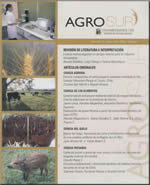USE OF PLANT SOCIOLOGICAL TABLES TO DETECT PLANT SPECIES WITH CONSERVATION PROBLEMS
Main Article Content
Abstract
An algorithm is presented to detect plant species with conservation problems from plant sociological tables representative of specific plant associations. Rare species that present conservation problems can be identified from the first column of a plant sociological table using the following criteria: Frequency, geographic origin, plant sociological fidelity, survival capacity of secondary plant associations and survival capacity under cultivation. Using these criteria, species that do not have problems of conservation can be separated from those that may, allowing a reduction of over 90% of the original species list. Thus the number of species that need a more in depth study can be significantly reduced. Furthermore, species with probable problems of conservation that are selected can remain within determined plant associations (their habitat), thus facilitating their study, the collection of material and their later conservation in situ. Results of two cases studied near Valdivia (Chile) in a forest of roble-laurel-lingue (Nothofago-Perseetum linguae) and olivillo forest (Lapagerio-Aextoxiconetum punctatii) with 158 and 127 plant species are presented. The number of species to be considered for a program of conservation was reduced to 13 and 9 species, respectively. Some of the species that were included have already been included in red lists, such as Blechnum corralense, Libertia tricocca, Asplenium trilobum, Hypolepis poeppigii and Satureja multifora, the majority of which belong to the roble-laurel-lingue forest association that has received the greatest impact of human intervention in the south of Chile. Within the species of the olivillo forest, Peperommia nummularioides was considered to be extinct in the regions studied.

